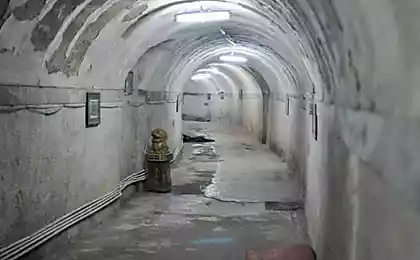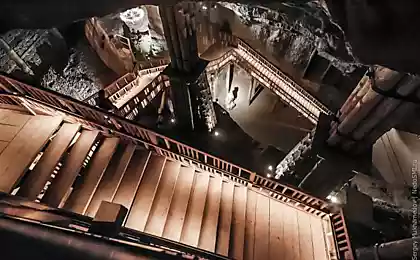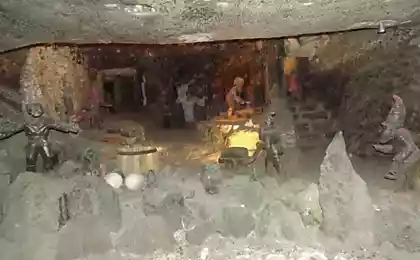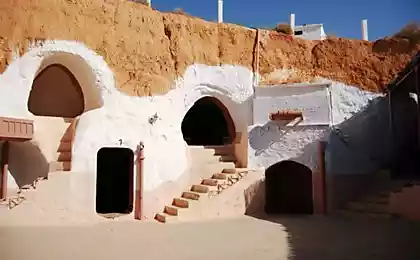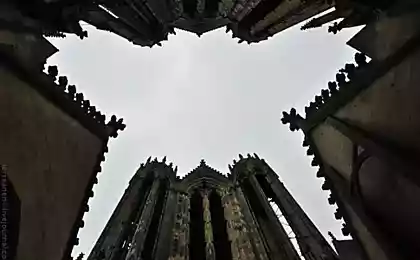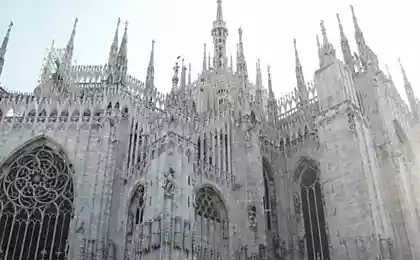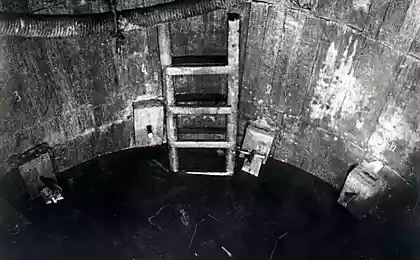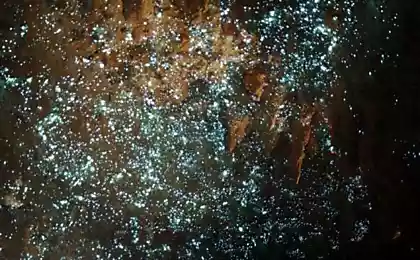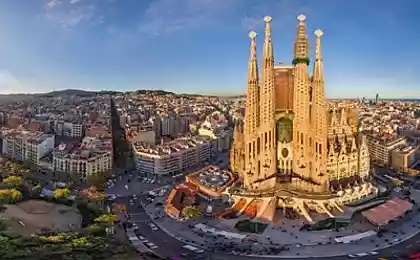1436
Wieliczka Salt Mine - underground salt Cathedral
Deep beneath the surface of Poland is something amazing, but a little-known outside Eastern Europe. For centuries, miners mined salt here, but what is left after them is simply breathtaking. Let's look at the most unusual salt mine in the world.
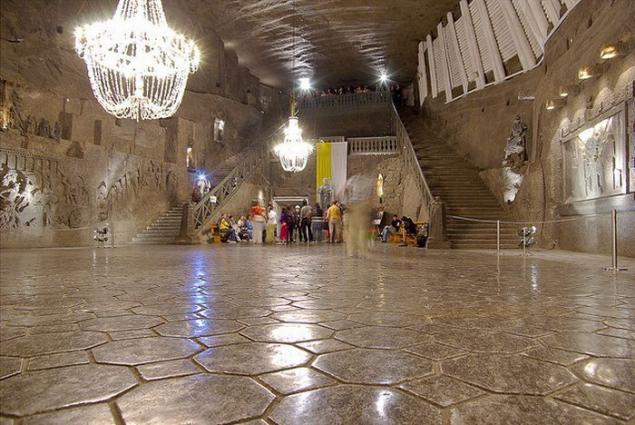
Located in Krakow, Wieliczka - a small town, where about 20 thousand people. It was founded in the twelfth century, the local duke, to develop rich local deposits of salt. Development was carried out until 1996, but the generation of miners is not just mined salt. They left behind a breathtaking evidence of his time in the form of statues of mythical, historical and religious characters. They even set up a chapel to pray. Perhaps the most incredible heritage of their descendants - an underground cathedral.
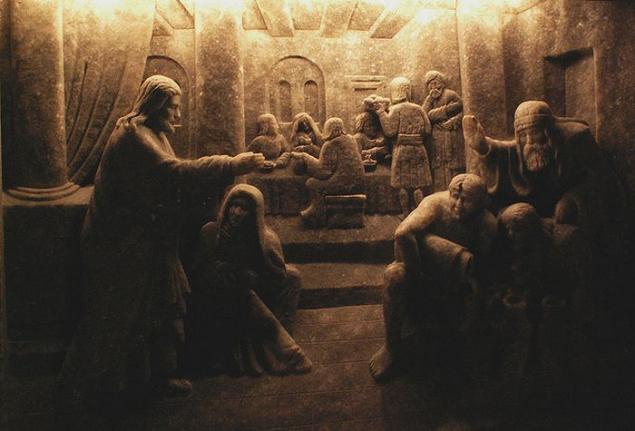
When you go down into the depths, it seems like you're in an adventure book by Jules Verne. And after overcoming a long wooden staircase in a hundred and fifty meters, the visitor salt mine stunning views. Its size and majesty stands the Chapel of St. Kinga. Poles for centuries were devoted Catholics, so the creation of the chapel was not just a hobby, so brighten up the long hours underground - it was an act of worship.
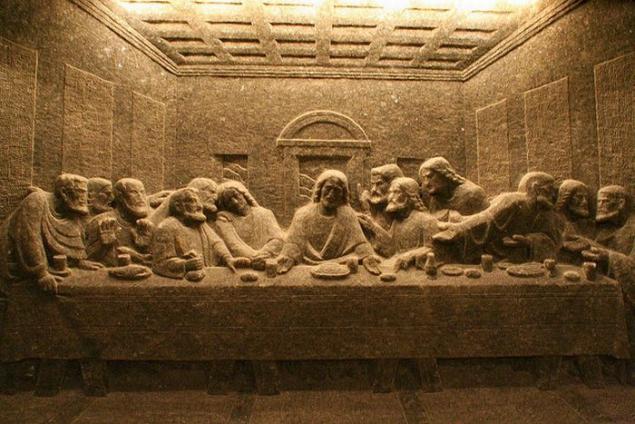
Incredibly, even chandeliers in the cathedral made of salt. They are not simply hewed and gathered together, the process was much more complicated. After removing the salt is first dissolved and then reconstituted with impurities are chosen so that in the end it turned consistency similar to glass. Chandeliers look like that expect to see visitors who are accustomed to the salt looks like they have in the salt shaker, and I believe that the rest of the cave will also meet their expectations. However, the color of the rock salt in nature - gray, it may be different shades only, and is similar to granite.
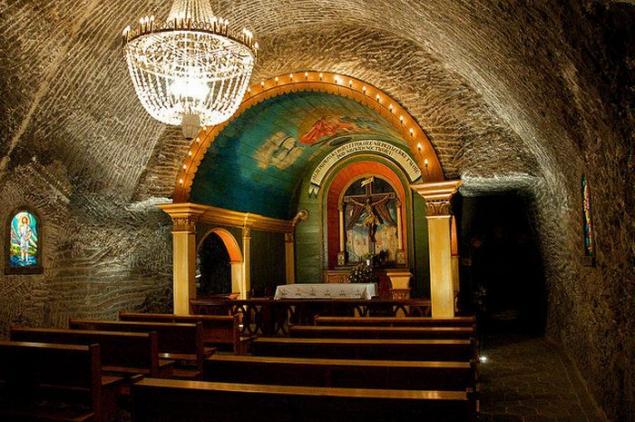
Yet this does not stop more than a million visitors (mostly from Poland and its Eastern European neighbors), who come to, among other things, see how the salt was mined previously.

These carvings are probably among the most iconographic works of Christian folk art and they deserve to be seen. No wonder that the mine was included in the list of UNESCO World Heritage Site in 1978.
Religious carving, in fact, attracts many - in part to its credibility, in part - the aesthetics of Christianity. In the picture - Jesus appeared to the apostles after the crucifixion. It shows the non-believer, St. Thomas, the wounds on his wrists.
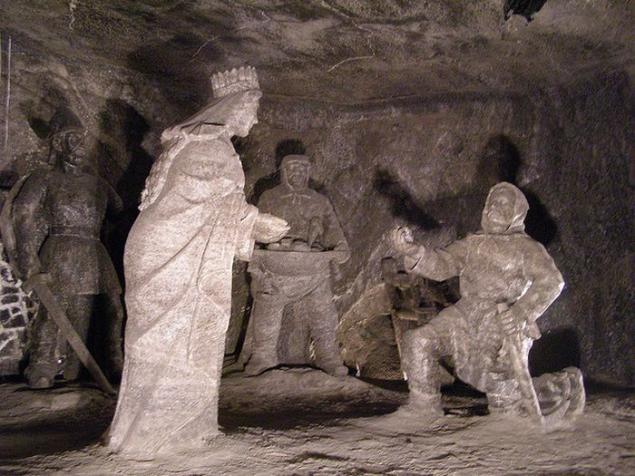
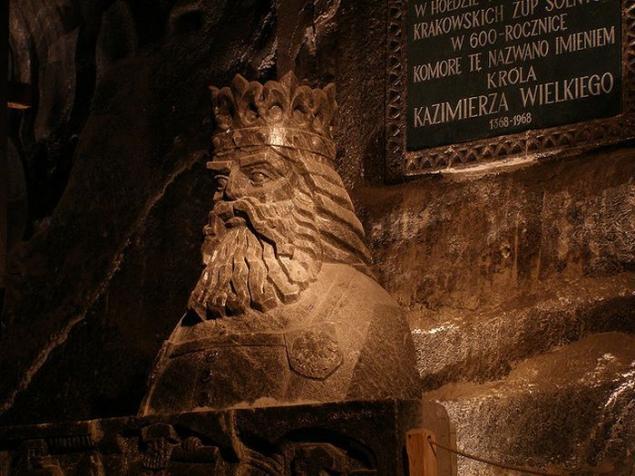
But not all work here are the bas-reliefs. There are many statues of life-size, the creation of which took months, and perhaps years. The mine is also a lot you can learn about the miners of the tools and mechanisms they used - they are presented here and they are hundreds of years. The catastrophic floods in 1992 caused the final blow to the commercial production of salt in the region and now mine is working only as a tourist attraction. Saline solution, however, is still pumped out of the shaft - and then evaporated to give a certain amount of salt, although this is unlikely to be compared with the production in the past. But if you do not, you will soon again be flooded mine.
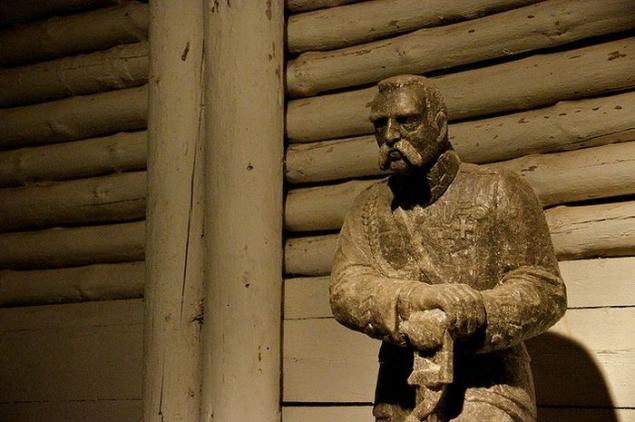
For reasons of security inspection discovered less than one percent of mine, but this part - almost four kilometers in length - more than enough to weary traveler an hour or two. The development of the mine was abandoned for two reasons: too low price of salt in the world market development are made unprofitable. In addition, the mine is gradually filled with water - another reason to limit the access of tourists in some of its parts.

Not all of the statues have a religious or symbolic significance. Miners have a sense of humor, after all! Here you can see their vision of the legend of Snow White and the Seven Dwarfs. Carefully hewn dwarves seemed to be some sort of miners ironic image of their work.
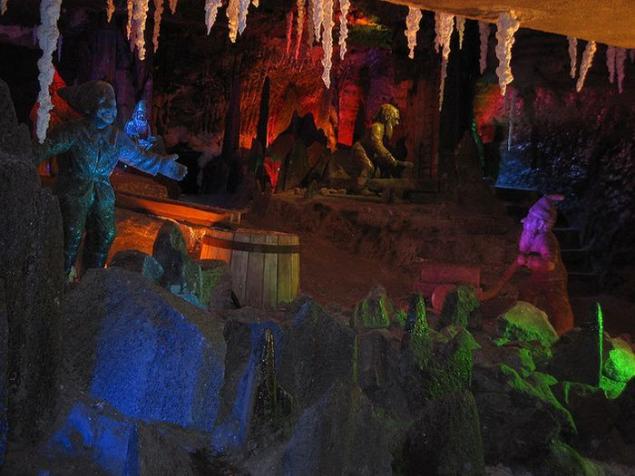
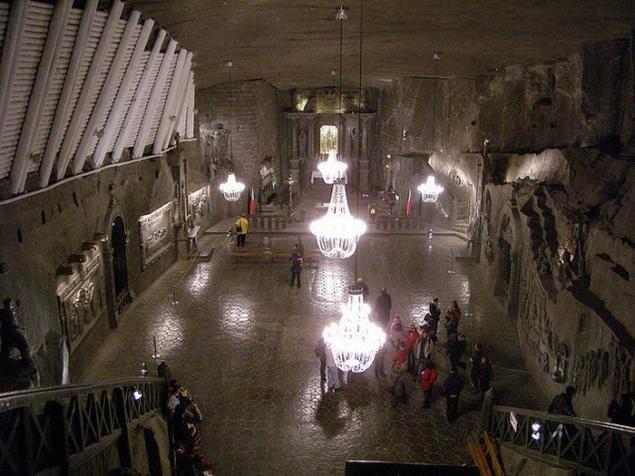

Miners even made a dragon! Specifically, they whistled at work, although the conditions in a salt mine were not comfortable, and the hours - long, let alone the fact that it took place under the ground, apparently did not add enthusiasm to the gathering to work every morning.
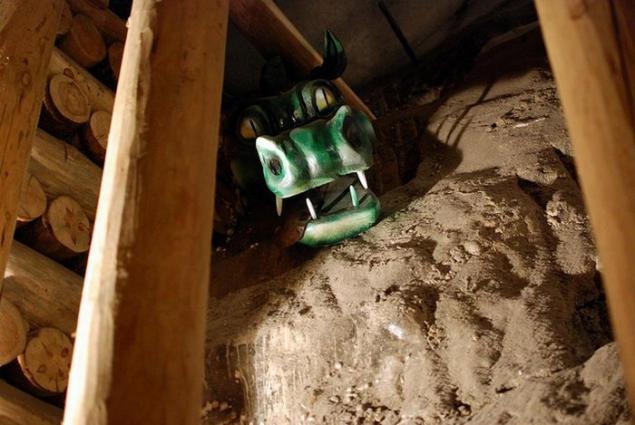
And in addition there is an underground lake lit with electric lights dimmed and candles. Perhaps there converge the legend of the underground lakes of the underworld and the Catholic conception of the saints, to the mine produced an even greater impression. How very different a few minutes now from those that were among the sweat and the noise of daily work in the mine before.
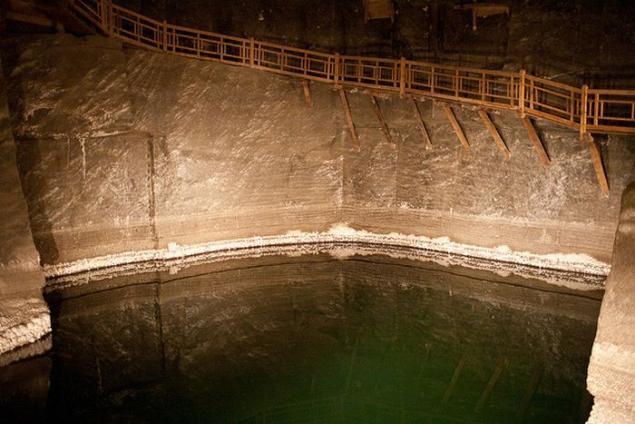
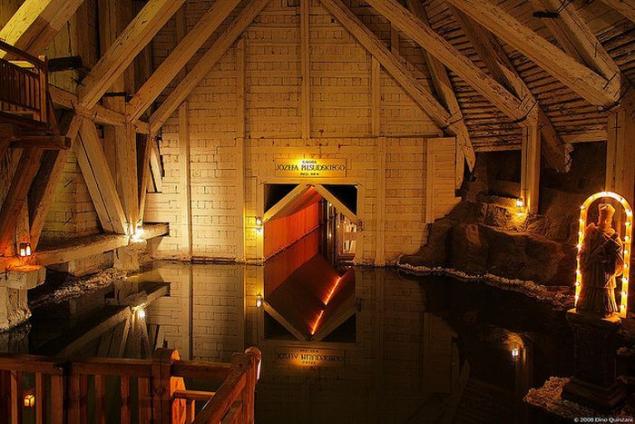
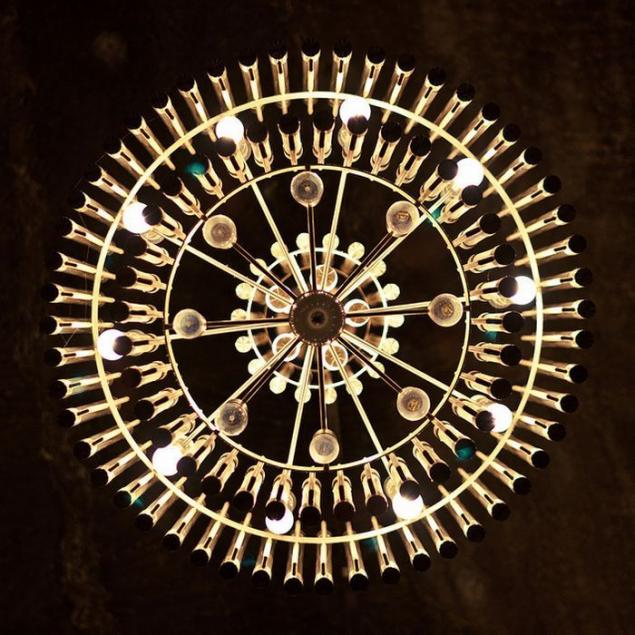
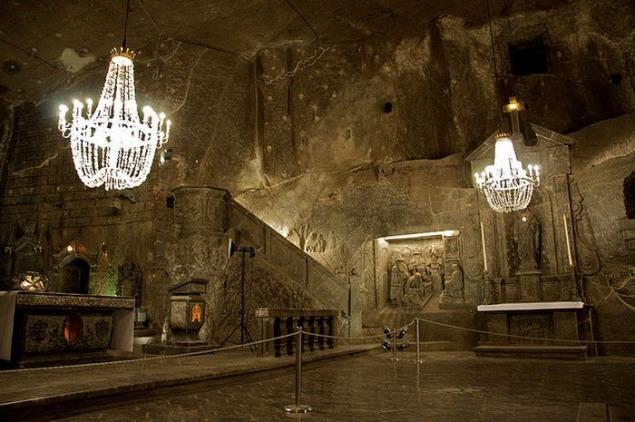
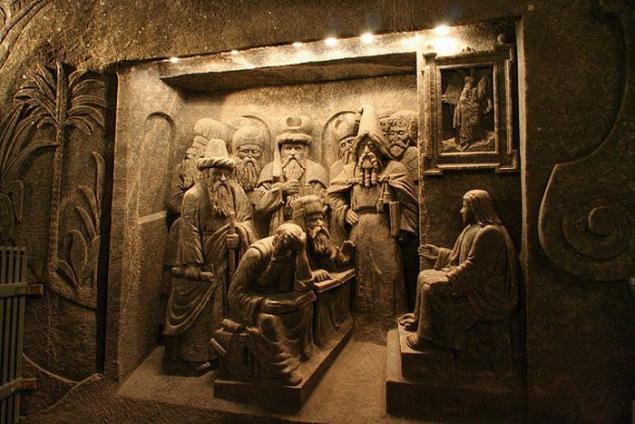
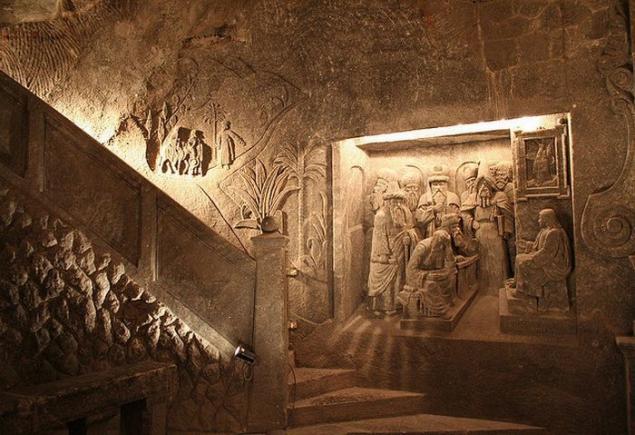
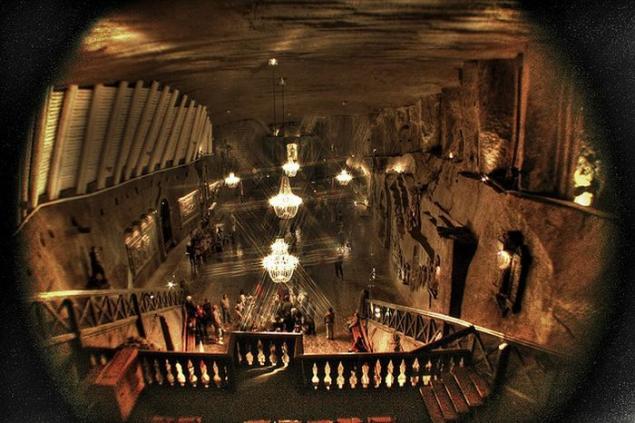
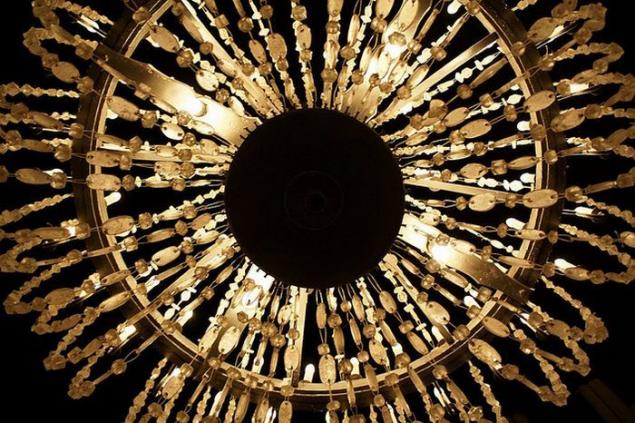
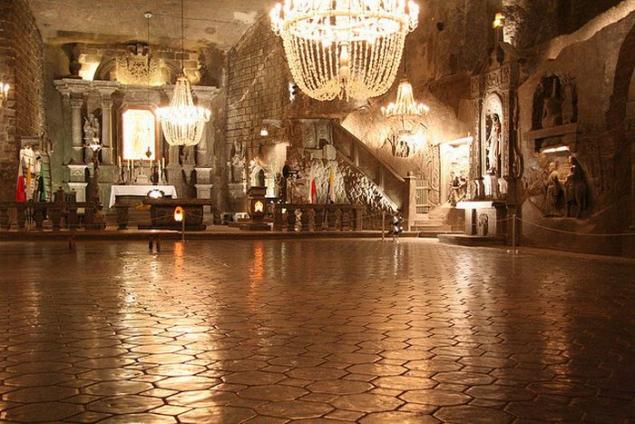

Here is the salt mine outside. It is noticeable that take care of it better than any other mine where salt is mined for 10 years, but the rest - nothing remarkable.

Source: newsinphoto.ru

Located in Krakow, Wieliczka - a small town, where about 20 thousand people. It was founded in the twelfth century, the local duke, to develop rich local deposits of salt. Development was carried out until 1996, but the generation of miners is not just mined salt. They left behind a breathtaking evidence of his time in the form of statues of mythical, historical and religious characters. They even set up a chapel to pray. Perhaps the most incredible heritage of their descendants - an underground cathedral.

When you go down into the depths, it seems like you're in an adventure book by Jules Verne. And after overcoming a long wooden staircase in a hundred and fifty meters, the visitor salt mine stunning views. Its size and majesty stands the Chapel of St. Kinga. Poles for centuries were devoted Catholics, so the creation of the chapel was not just a hobby, so brighten up the long hours underground - it was an act of worship.

Incredibly, even chandeliers in the cathedral made of salt. They are not simply hewed and gathered together, the process was much more complicated. After removing the salt is first dissolved and then reconstituted with impurities are chosen so that in the end it turned consistency similar to glass. Chandeliers look like that expect to see visitors who are accustomed to the salt looks like they have in the salt shaker, and I believe that the rest of the cave will also meet their expectations. However, the color of the rock salt in nature - gray, it may be different shades only, and is similar to granite.

Yet this does not stop more than a million visitors (mostly from Poland and its Eastern European neighbors), who come to, among other things, see how the salt was mined previously.

These carvings are probably among the most iconographic works of Christian folk art and they deserve to be seen. No wonder that the mine was included in the list of UNESCO World Heritage Site in 1978.
Religious carving, in fact, attracts many - in part to its credibility, in part - the aesthetics of Christianity. In the picture - Jesus appeared to the apostles after the crucifixion. It shows the non-believer, St. Thomas, the wounds on his wrists.


But not all work here are the bas-reliefs. There are many statues of life-size, the creation of which took months, and perhaps years. The mine is also a lot you can learn about the miners of the tools and mechanisms they used - they are presented here and they are hundreds of years. The catastrophic floods in 1992 caused the final blow to the commercial production of salt in the region and now mine is working only as a tourist attraction. Saline solution, however, is still pumped out of the shaft - and then evaporated to give a certain amount of salt, although this is unlikely to be compared with the production in the past. But if you do not, you will soon again be flooded mine.

For reasons of security inspection discovered less than one percent of mine, but this part - almost four kilometers in length - more than enough to weary traveler an hour or two. The development of the mine was abandoned for two reasons: too low price of salt in the world market development are made unprofitable. In addition, the mine is gradually filled with water - another reason to limit the access of tourists in some of its parts.

Not all of the statues have a religious or symbolic significance. Miners have a sense of humor, after all! Here you can see their vision of the legend of Snow White and the Seven Dwarfs. Carefully hewn dwarves seemed to be some sort of miners ironic image of their work.



Miners even made a dragon! Specifically, they whistled at work, although the conditions in a salt mine were not comfortable, and the hours - long, let alone the fact that it took place under the ground, apparently did not add enthusiasm to the gathering to work every morning.

And in addition there is an underground lake lit with electric lights dimmed and candles. Perhaps there converge the legend of the underground lakes of the underworld and the Catholic conception of the saints, to the mine produced an even greater impression. How very different a few minutes now from those that were among the sweat and the noise of daily work in the mine before.










Here is the salt mine outside. It is noticeable that take care of it better than any other mine where salt is mined for 10 years, but the rest - nothing remarkable.

Source: newsinphoto.ru





